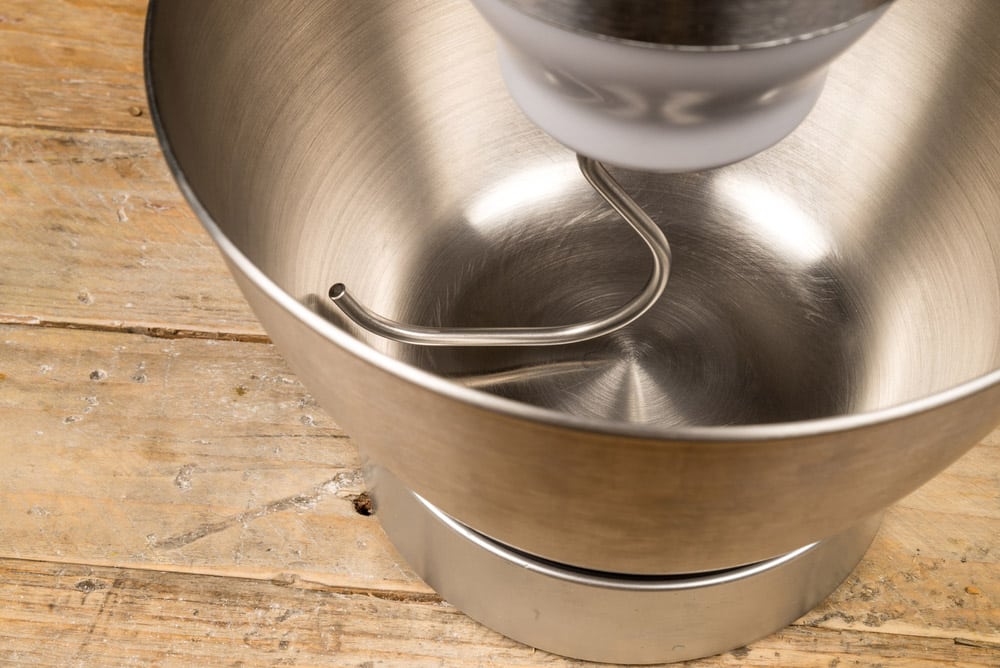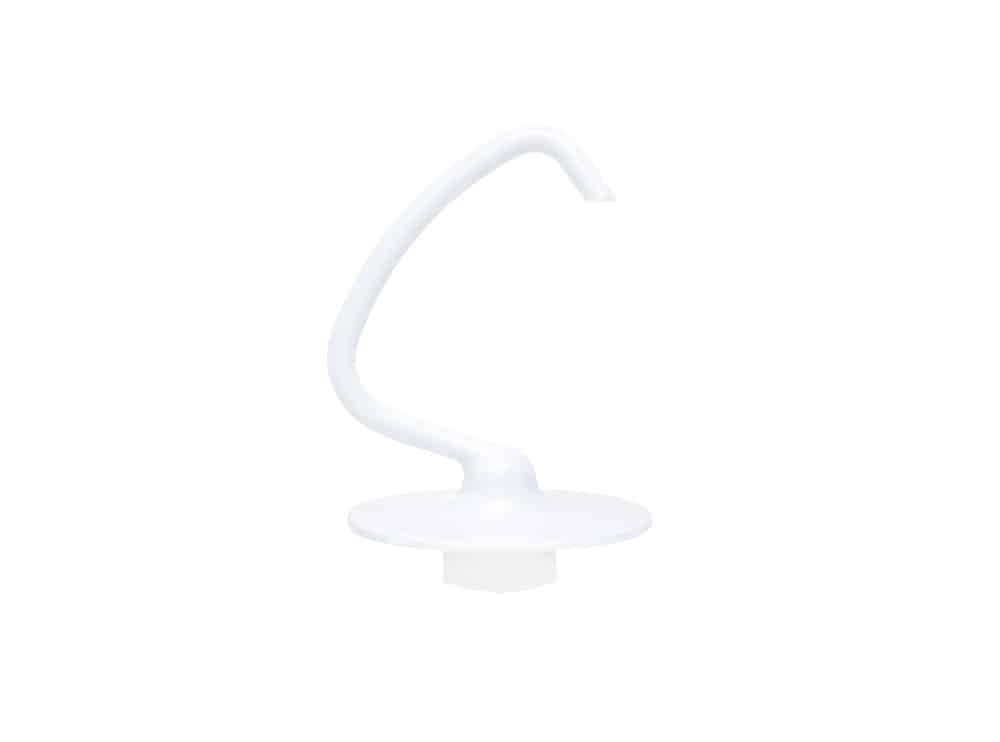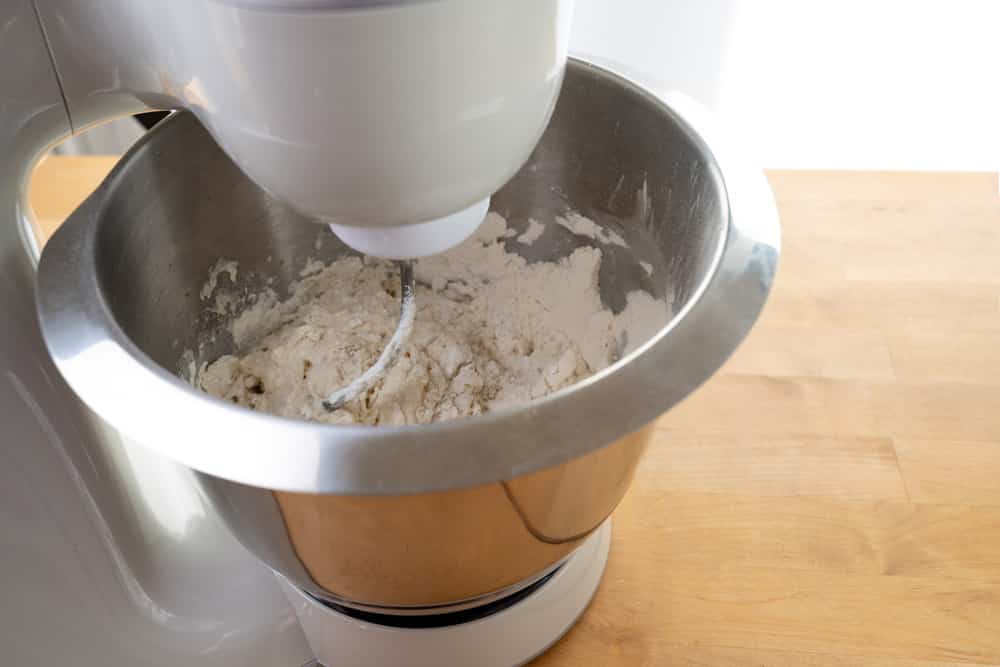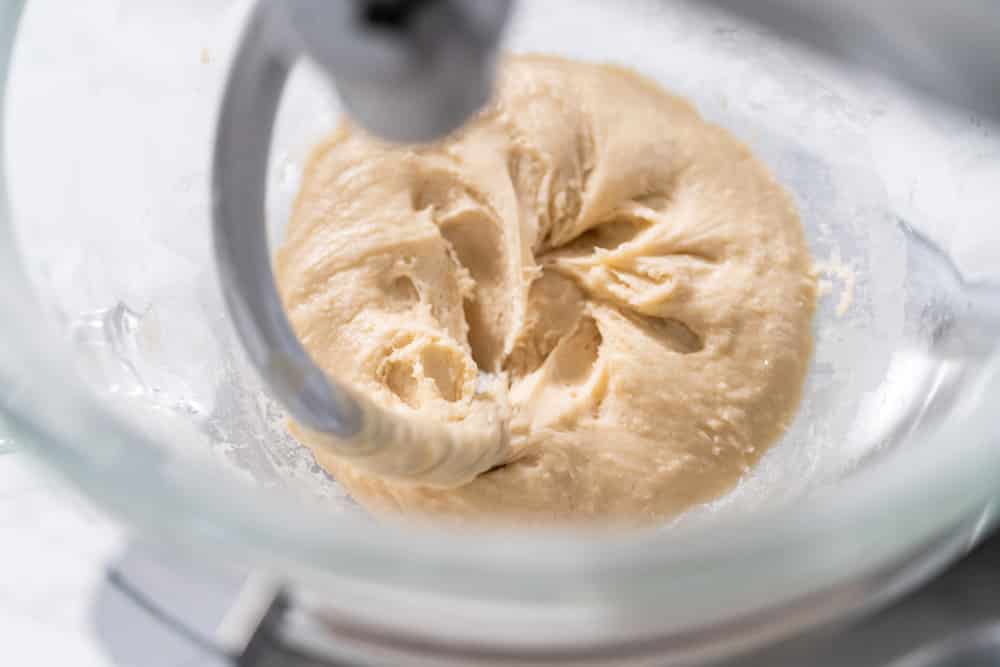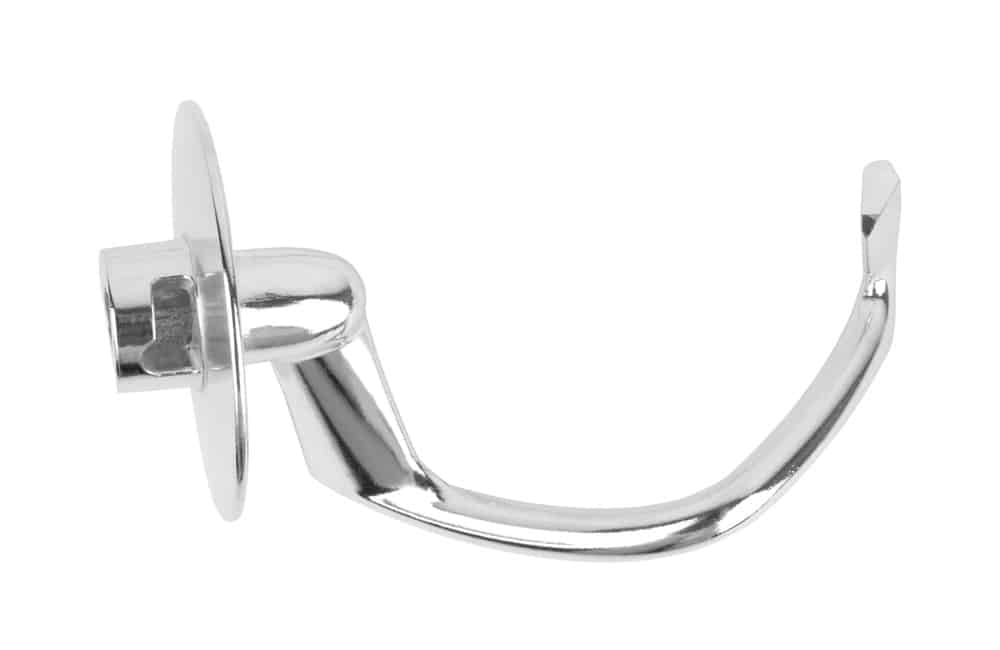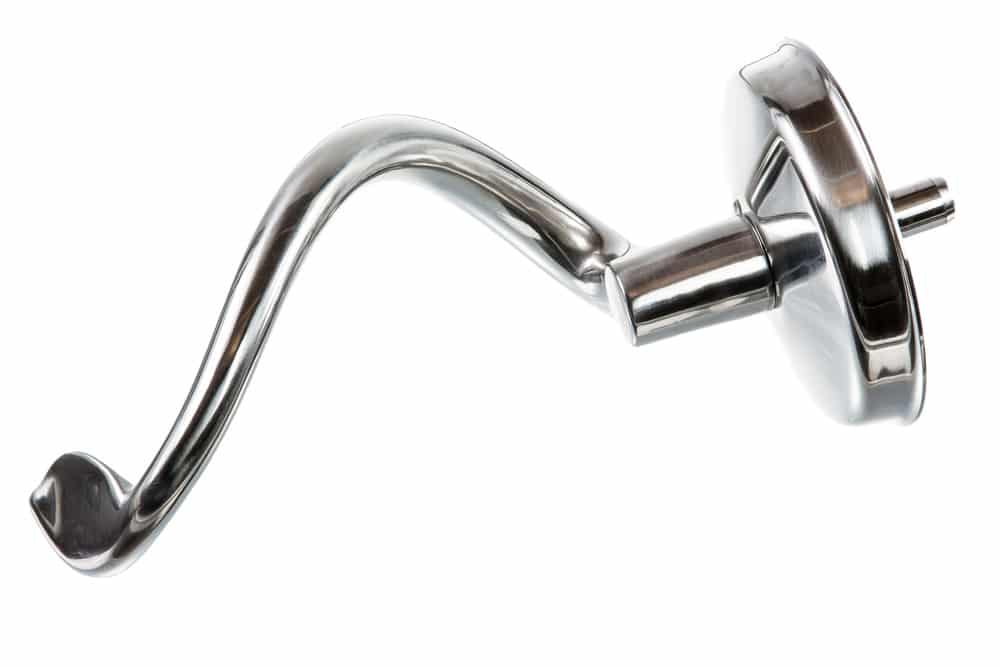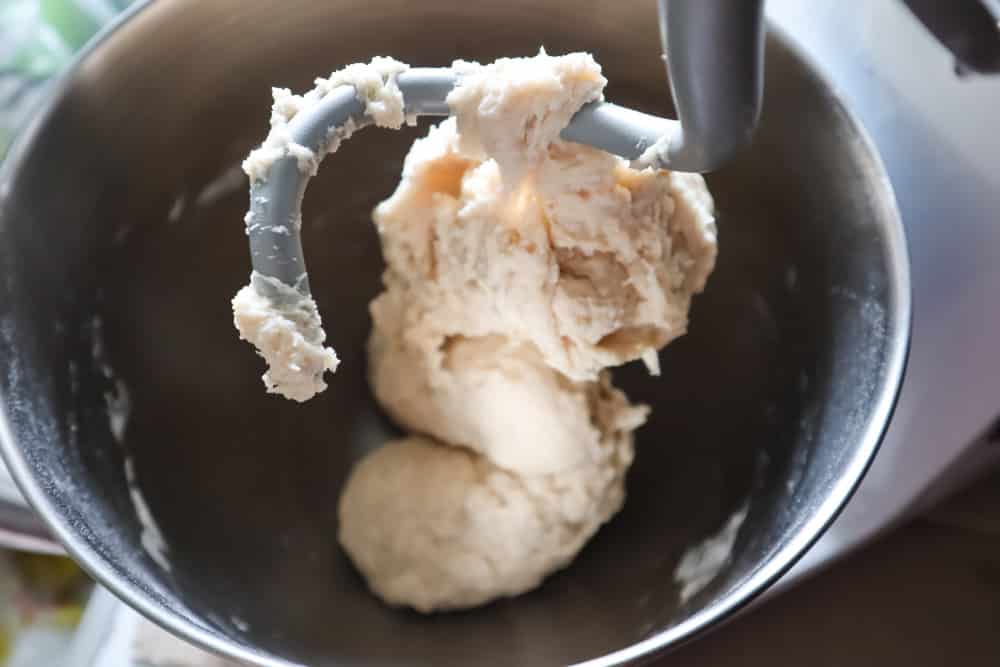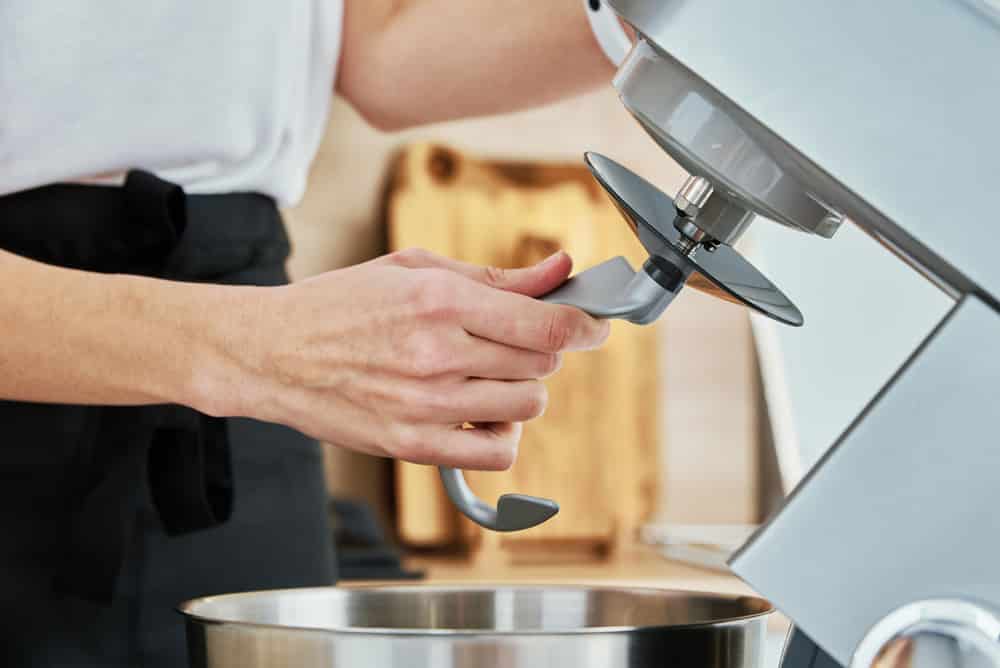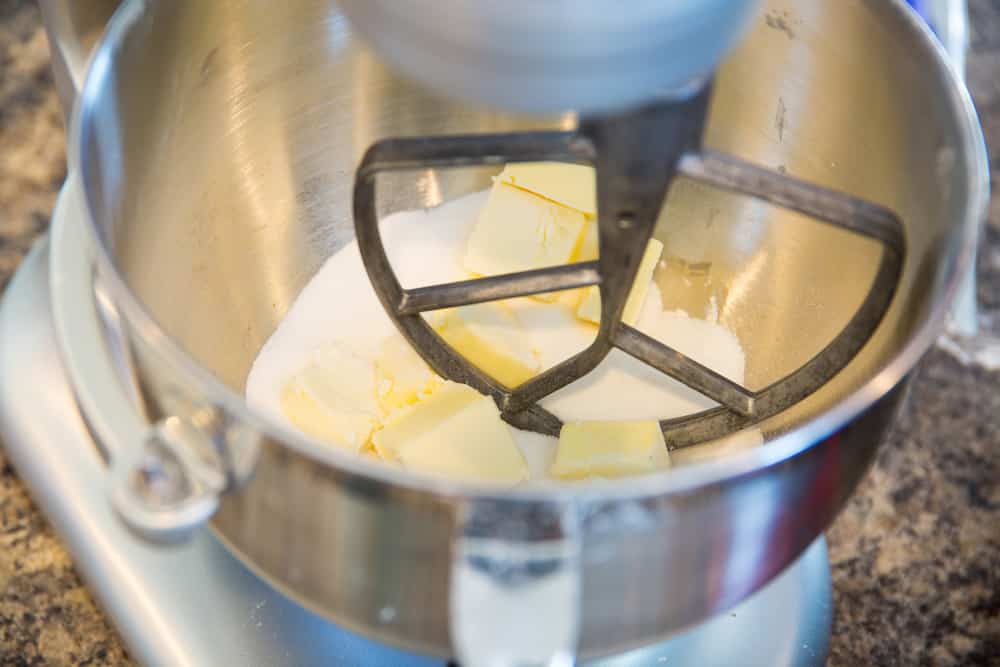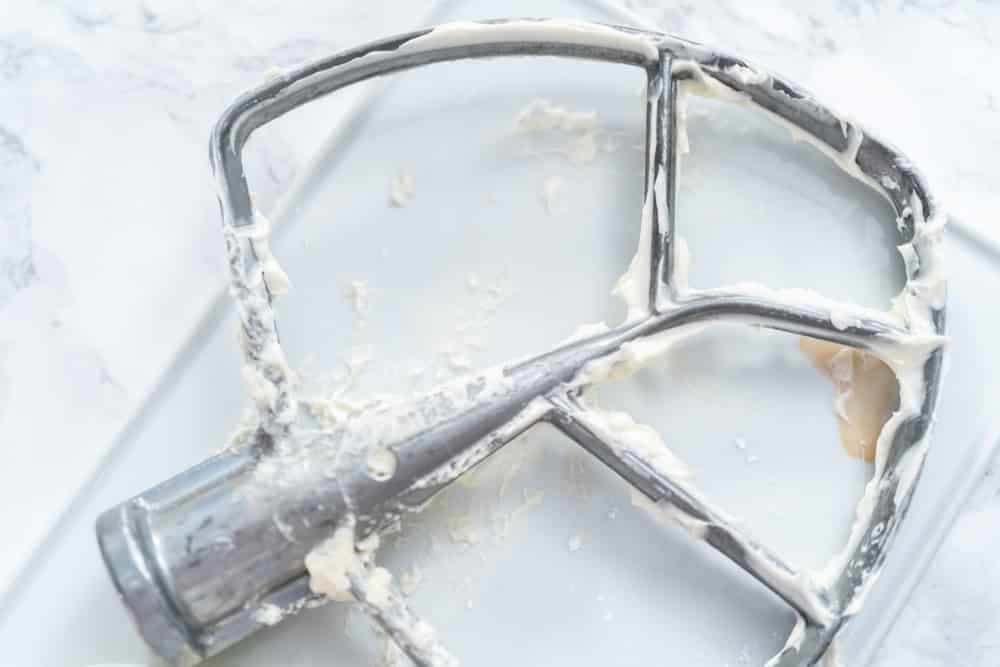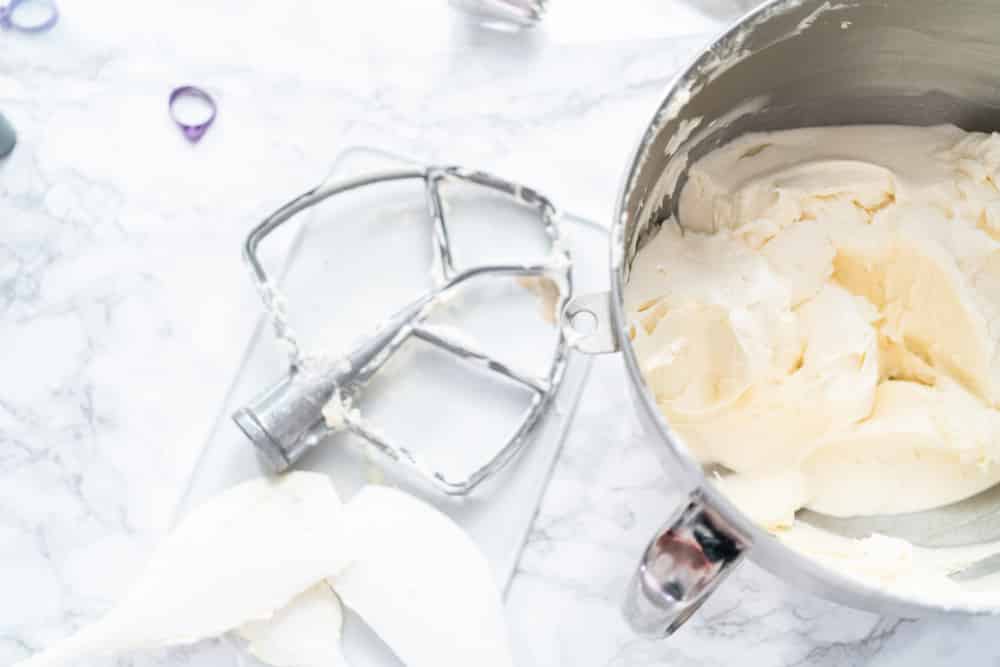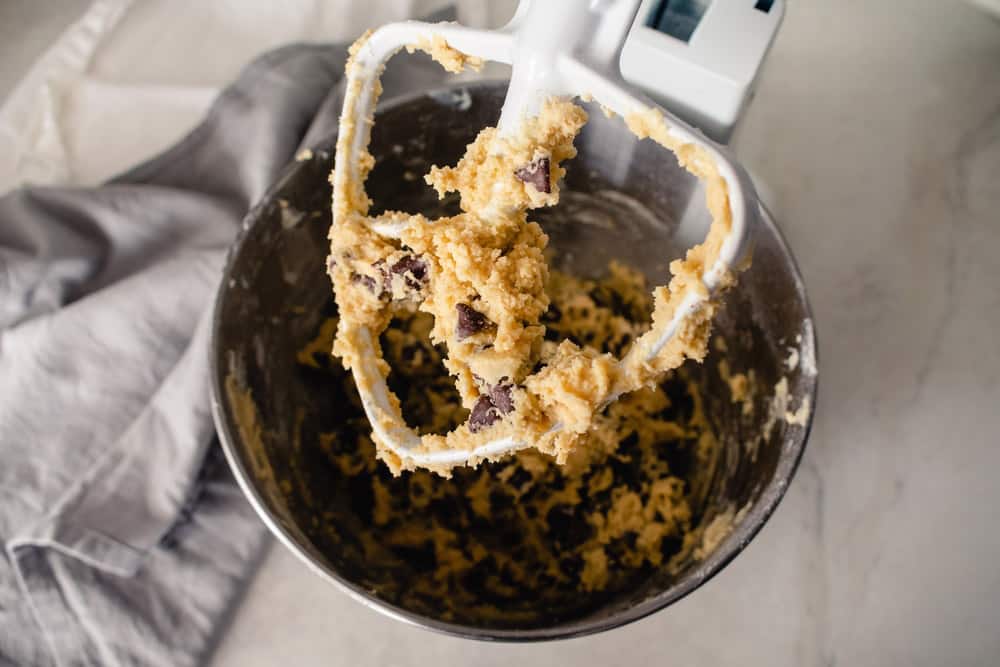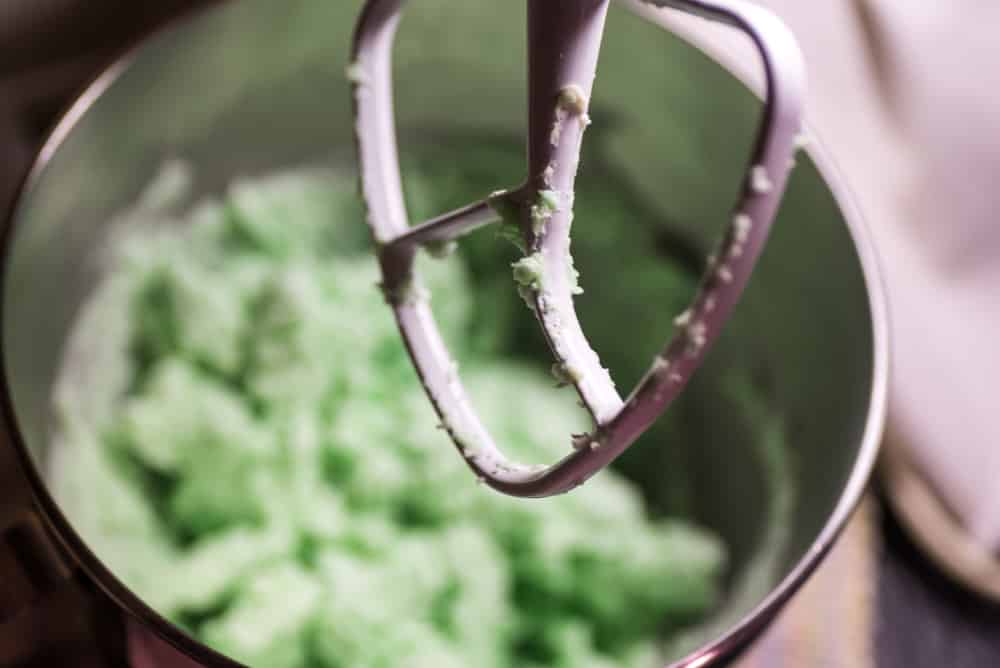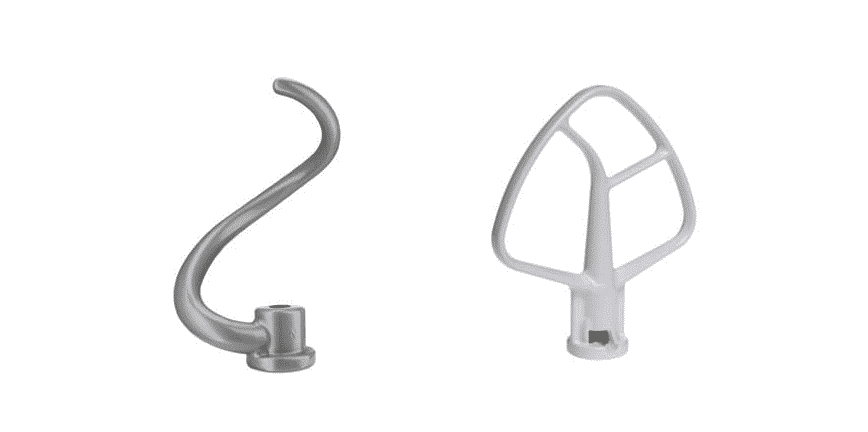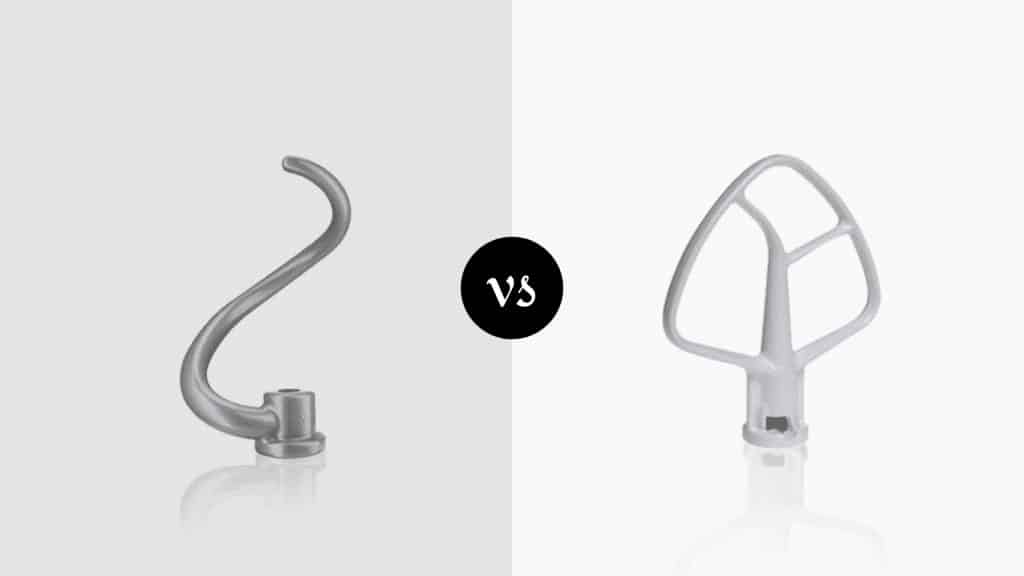
DISCLOSURE: This post may contain affiliate links, meaning when you click the links and make a purchase, I receive a commission. As an Amazon Associate I earn from qualifying purchases.
Today’s stand mixers come with a variety of hook attachments that make cooking and baking far easier than by hand. Each of these hook attachments serves a different purpose and specializes in a particular function.
Some hook attachments are interchangeable, offering enhanced utility value, while others are not. Are you wondering if a dough hook and a paddle hook are the same things? After all, both can mix well.
One must keep in mind that each and every attachment has been specially designed to excel at a singular purpose, so one must keep their specific uses in mind. After this, this is why every hook is different, custom-created to work better than its counterparts and its function.
We’ll be taking you through a look at everything that you need to know about a dough hook vs. paddle. We’ll be explaining why you shouldn’t be using a paddle hook in the place of a dough hook attachment and vice versa.
Dough Hook Vs. Paddle Comparison
| Dough Hook | Paddle Attachment | |
|---|---|---|
| Appearance | C, J Or Spiral Shape Attachment Conventionally Made From Steel Or Stainless Steel And Covered With Non-Stick Coating | Curved Paddle/Oar Shaped attachment With Three Large Recesses |
| Function | Kneading All Dough Types | Mixing Without Aeration |
| Suitability | Dough, Heavy Dough, Yeast-Based Dough | Batters, Batter-Based Bread |
| Variations | C Dough Hook, Spiral Dough Hook | Single Design |
| Alternate Uses | Mixing Batter Based Bread | Combining Ingredients Before Further Kneading Or Whisking |
| Interchangeability | Interchangeable With C & Spiral Hook Attachment, Not Interchangeable With Other Attachments | Limited Interchangeability With Dough Hook |
| Alternatives | Paddle For Mixing Ingredients Before Kneading, Hand Kneading | Dough Hook For Mixing & Kneading From Start To Finish |
Dough Hook Vs. Paddle
Never be left confused again, and make sure that you know how to get the most out of your stand mixer by reading through our comprehensive comparison. Let’s see what each of these popular attachments is meant for.
Dough Hook
Most of us are familiar with a dough hook, but there are many new stand mixer owners who have no clue how to use this handy tool. It’s fairly straightforward, kneading dough in much the same way as one would by hand.
Let’s take a closer look at this essential component that comes with every mixer.
Appearance
The dough hook attachment carries a curved arm design that resembles a hook, as the name suggests. Not every hook carries the same shape, but all are either curved or bent.
Dough hooks may all have a similar design that maximizes the torque of a hook, but the actual hook itself will be different for each individual attachment despite certain standard shapes being available across most manufacturers.
Each comes with a durable non-stick coating matched to the other attachments supplied with the mixer.
Function
A dough hook is specifically engineered to mix and knead various yeast-based doughs, including bread, pizza, and pasta dough.
The dough hook helps gluten develop within the dough, which gives it elasticity that traps air bubbles inside, resulting in perfectly baked, light, and fluffy bread with just the right degree of crispiness and chewiness.
Suitability
A dough hook can be used for yeast-based or heavy dough. This includes but is not limited to bread, pizza, pasta, pie, and cookie dough, as well as heavy cakes. Any mixture that requires force to mix well is generally well-suited to the dough hook attachment of your stand mixer.
A dough mixer can withstand thick consistency. This is one reason you can’t risk using any other stand mixer or hand mixer attachment.
If you use the wrong mixing blade, you run a high risk of the mixer overheating, so refrain from using any other attachment when kneading dough. The dough hook mimics the hand kneading movements and gives excellent results.
Variations
There are two basic dough hook shapes used across all stand mixer attachments. Always be on the lookout for high-quality engineering that makes use of reliable materials like stainless steel with sound design elements such as being dishwasher-safe with a secure attachment point.
- C Dough Hook
[amazon box=”B07SQQDLB2″]
The C dough hook is one of the oldest variations of a dough hook. Certain manufacturers refer to the C-shape as a J hook instead. It is famous for pushing the dough to the sides of the bowl to mix it properly.
The C-shaped hook is ideal for working heavy doughs with either very high or very low hydration. However, there’s no impaired performance when kneading any consistency of dough. The same degree of thoroughness can be expected across all dough types.
The only downside to a standard c dough hook is that dough is prone to get stuck to the hook leading to an imbalance in the bowl.
One almost always needs to stop the stand mixer periodically to make sure the mixing bowl has a balanced load of dough without any dough stuck to the hook before allowing kneading to continue.
- Spiral Dough Hook
[amazon box=”B089NC57GV”]
The spiral dough hook is a new variation. It looks like a corkscrew and derives its name from its spiral shape. Unlike the C-shaped dough hook that scraps the dough from the sides, this dough hook works differently.
The spiral dough hook scrapes the dough from the bottom to the top instead. This results in more contact with the dough when kneading, which improves gluten formation as compared to dough kneaded by hand or with the C dough hook.
It also allows the dough to be kneaded without getting stuck to the attachment, which makes one have to stop the stand mixer and adjust the load. The only caveat to this improved dough hook design is that the spiral attachment is only capable of kneading medium hydration doughs.
If the dough is too dry or too wet, the consistency leads to dough getting stuck to the hook instead of passing over it, as intended.
Alternate Uses
Turn to your dough hook whenever you want to mix a great volume of any dough at a time. The dough hook only works for kneading dough. It is not a suitable alternative for whisking or beating.
Interchangeability
You’ll find that the dough hook is capable of processing any dough that the spiral hook can. These two hook types are interchangeable but keep in mind that you’ll get better performance out of the spiral hook when kneading small to medium quantities of dough.
Alternatives
The only attachment that you can use instead of a c dough hook is a spiral dough hook. Don’t attempt using a beater attachment, whisky, or a hand mixer and its range of attachments. The circle loop attachment is meant for whisking, not kneading dough.
Rather knead by hand if you don’t have the machine capacity and power to process your dough type or the volume of dough you’re working with at a time.
Paddle
Every stand mixer comes with a range of basic attachments, and a paddle is one of them. It’s the default attachment that most of us become familiar with before beginning to work with dough. The paddle hook attachment is all-in-one.
If you’re familiar with baking, you have every reason to love the paddle hook. This hook is used for mixing the batter without allowing too much air in. After all, some recipes can’t afford even the slightest aeration.
Let’s take a closer look at what makes the paddle invaluable and different from the dough hook.
Appearance
As the name suggests, the paddle attachment is shaped like a paddle and resembles the curved ovalesque shape of the front of an oar.
It always has three large recesses as the rounded attachment is designed to pass through ingredients without making excessive direct contact.
The easiest way to tell which attachment is the paddle is to look for the tool with the widest design that isn’t a whisk and is not shaped like a hook or spiral either.
Function
The paddle attachment is specifically created for mixing dry and wet ingredients without aerating them.
The power behind each stand mixer turns the flat paddle attachment rapidly, which allows it to mix together wet and dry ingredients, folding them and air into each other and effectively creating a dense mesh of fat, crystallized sugar, and trapped moisture.
Certain batters and other mixtures don’t need the aeration that a whisk provides, and this is where a paddle is an optimal tool. Some of the recipes that require a paddle hook attachment include cookie dough, cake batter, pancakes, and cupcakes.
Suitability
Contrary to an ongoing notion, the paddle is not suitable for kneading dough. It is for mixing wet and dry ingredients only. Choose the paddle to mix batters and start the mixing process for heavier doughs.
The paddle hook is also perfect for beating frosting to the ideal consistency, and it allows one to attain incredibly soft peaks if you are using whipping cream.
Using the mixer over an extended period in an attempt to knead dough sufficiently will result in poorly textured baked goods, and it runs a high risk of damaging your stand mixer. One must also keep in mind that there are some recipes where the paddle hook has no use.
These recipes include bread and scones, as both of these recipes only require slight mixing. Too much mixing as is provided by the paddle might over aerate and spoil your desired results.
Variations
[amazon box=”B07VWHX4S5″]
Even though the material construction of each manufacturer’s paddle will differ, every paddle carries three basic divisions and a rounded triangle shape. All paddles are shaped exactly like a paddle.
There aren’t any variations of the core design, just build-quality differences between brands.
Alternate Uses
As we’ve covered, the paddle attachment of each stand mixer is meant for mixing. Yet, most find the tool to be the go-to solution for creaming as well.
The whisk is too light, and dough hooks are too large to cream butter and sugar, but the minimal surface contact and rapid mixing action of the paddle are ideal for creaming.
Many cooks use the paddle attachment to do the initial mixing of all forms of batter or dough and other solutions and then switch to the whisk or hook as is appropriate.
Interchangeability
The paddle attachment is easily the most versatile attachment that a stand mixer has but it’s not really interchangeable with any other tools.
It is conventionally used to bring mixtures closer to the point where they can be worked by other tools or used as is (thoroughly mixed but not over aerated).
While it’s not recommended, no-rise/quick-rising dough types can be kneaded using the paddle attachment, which makes it interchangeable for the hook.
Similarly, one can use the paddle to mix together wet and dry ingredients until they’re combined enough to be worked with ease and without the mess of using a whisk.
Alternatives
Many batters and cookie dough varieties require such light mixing that a paddle runs the risk of overeating the mixture. In this case, the best alternative to a paddle is simply mixing by hand. The whisk isn’t suited to mixing wet and dry ingredients.
It’s solely for whisking, which translates to aerating batters which is the exact opposite of what you’re trying to accomplish with a paddle. Hand-mixing is the only viable alternative to paddle mixing using a stand mixer.
Paddle Attachment Vs. Dough Hook, Concluding Thoughts
Keep in mind, it is far better to process multiple small batches of dough using the spiral or C dough hook rather than straining the machine, which leads to inadequate kneading and poor gluten formation anyway.
There will be times when it’s simply not viable to split a medium batch of dough to use the spiral hook, and with heavy and wet doughs, you really have no choice other than the c/j shaped dough hook. It all depends on what you’re making and exactly how much time you have.
